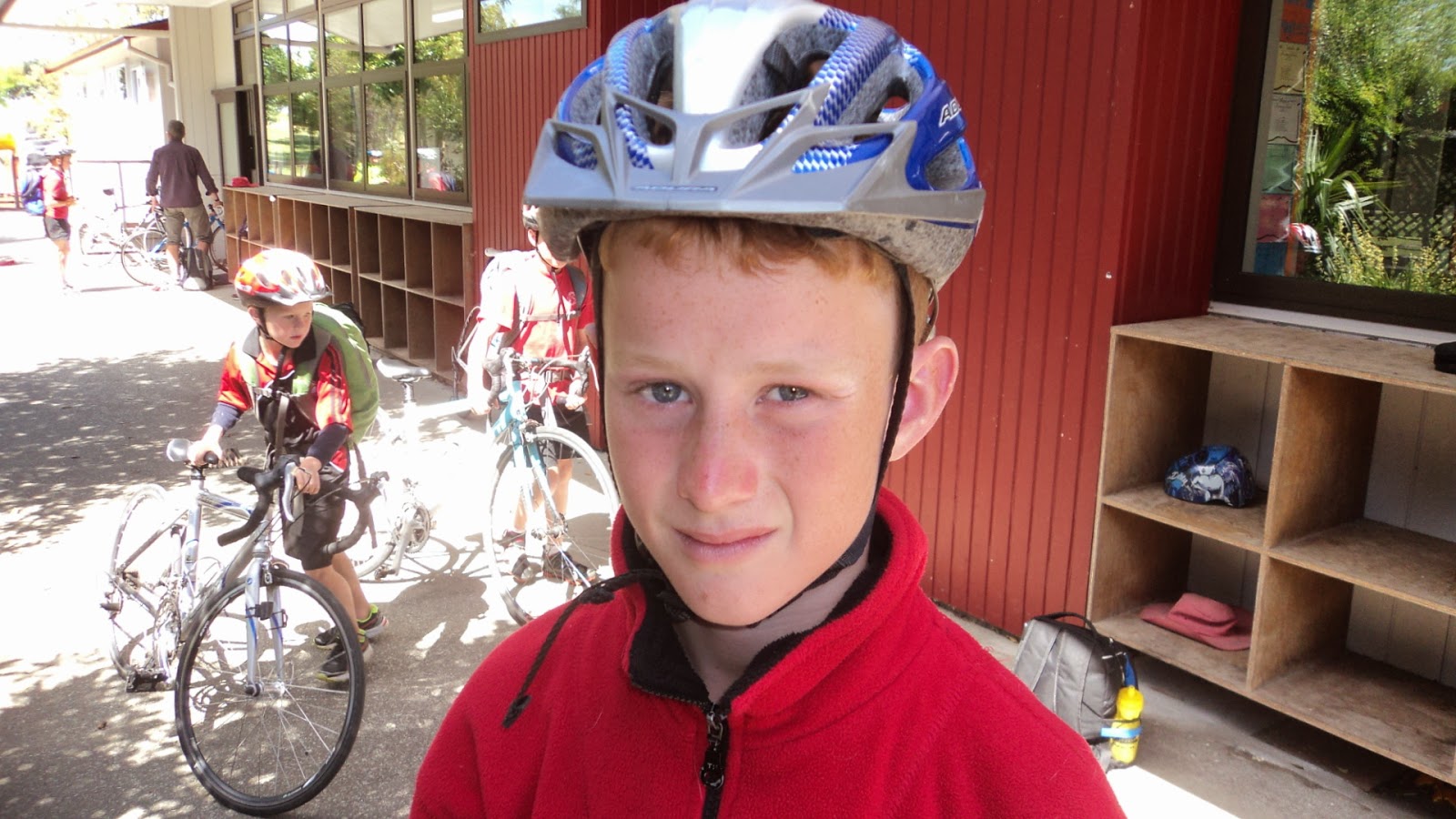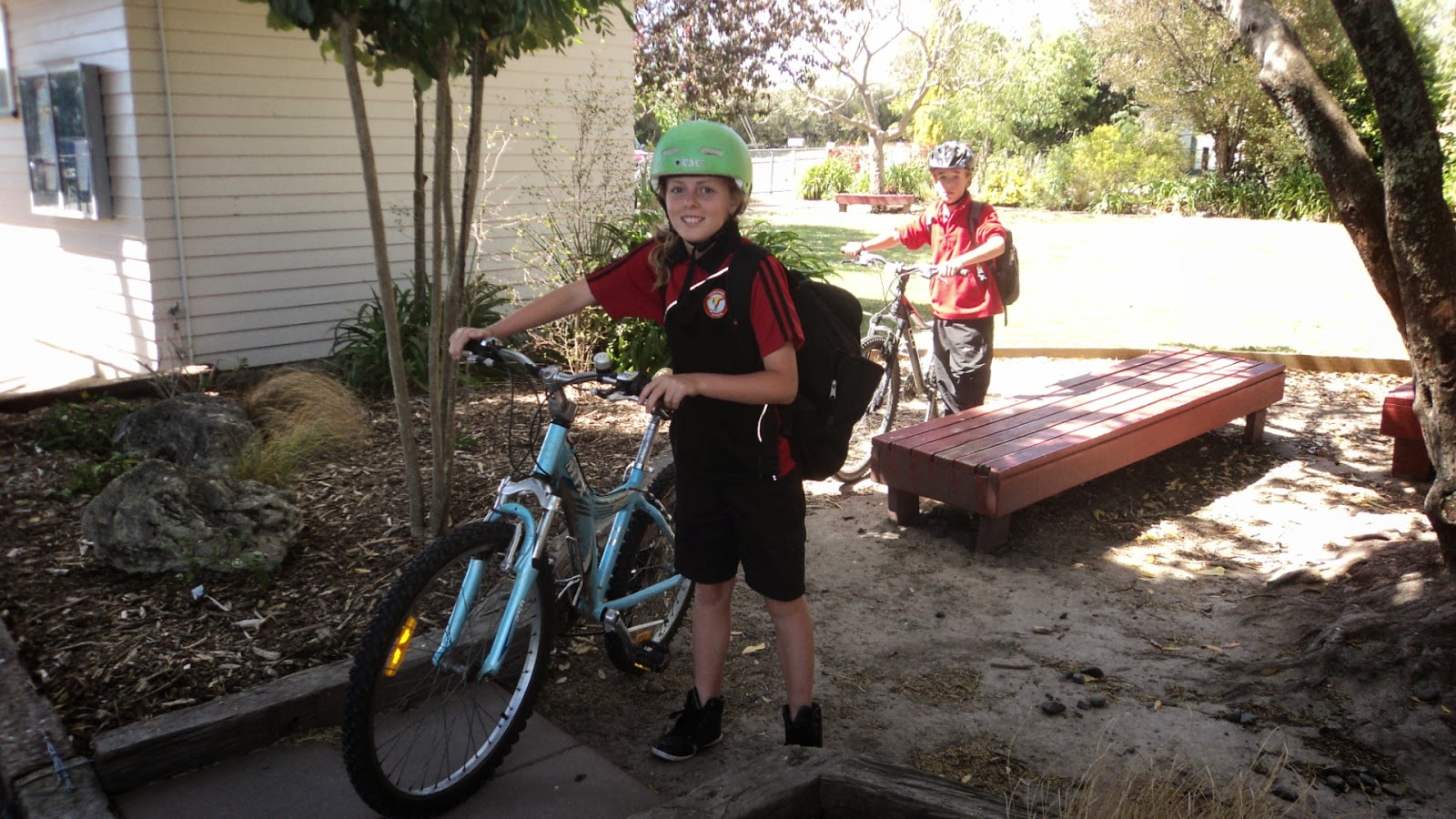Why Is Bike Safety So Important at
Haumoana School?
Bike riding is a lot of fun, but accidents happen.
Every year many children go to the emergency department because of bike
injuries, and some have injuries that require a few days in the hospital
usually from head injuries.
A head injury can mean brain injury. That's why it's so important to wear a bike helmet. Wearing one doesn't mean you can be reckless, but a helmet will provide some protection for your face, head, and brain in case you fall down.
A head injury can mean brain injury. That's why it's so important to wear a bike helmet. Wearing one doesn't mean you can be reckless, but a helmet will provide some protection for your face, head, and brain in case you fall down.
A Helmet
Bike
helmets are so important that the NZ government has created safety standards
for them. Your helmet should have a sticker that says it meets recognised
standards. Wear a bike helmet EVERY TIME YOU RIDE, even if you are going for a short
ride.
Your bike helmet should fit you properly. You don't
want it too small or too big. Never wear a hat under your bike helmet.
Once
you have the right helmet, you need to wear it the right way so it will protect
you. It should be worn level and cover your forehead. Don't tip it back so your
forehead is showing. The straps should always be
fastened. Make sure the straps are adjusted so they're snug enough
that you can't pull or twist the helmet around on your head.
Here is Harry wearing his bike helmet.
Here is Harry wearing his bike helmet.
Road Rules
If you're allowed to ride on the street, follow
these road rules:
·
Always ride with your hands on the
handlebars.
·
Always stop and check for traffic in
both directions when leaving your driveway, an alley, or a curb.
·
Walk your bike across busy intersections
using the crossing and following traffic signals.
·
Ride on the left-hand side of the
street, so you travel in the same direction as cars do. Never ride against traffic.
·
Use bike lanes or designated bike
routes wherever you can.
·
Don't ride too close to parked cars.
Doors can open suddenly.
·
Stop at all stop signs and obey traffic
lights just as cars do.
·
Ride single-file on the street with
friends.
·
When passing other bikers or people on
the street, always pass to their right side, and call out "On your right!"
so they know that you are coming.
Here are two children from our class leaving the school grounds to bike home.
Here are two children from our class leaving the school grounds to bike home.
Safe Riding Tips
Remember to:
- Wear a
Properly Fitted Bicycle Helmet. Protect your brain, save your life.
- Adjust Your
Bicycle to Fit. The seat should be level front to back. The
seat height should be adjusted to allow a slight bend at the knee when the
leg is fully extended on the pedal.
- Check Your
Equipment. Before
riding, inflate tyres properly and check that your brakes work.
- See and Be
Seen. Whether
daytime, dawn, dusk, foul weather, or at night, you need to be seen by
others. Always wear neon, fluorescent, or other bright colours when riding
day or night. Also wear something that reflects light, such as reflective
tape or markings, or flashing lights.
- Control Your Bicycle. Always ride with two hands
on the handlebars. Carry books and other items in a bicycle carrier or
backpack.
- Watch for and
Avoid Road Hazards. Be on the lookout for hazards such as
potholes, broken glass, gravel, puddles, leaves, and dogs. All these
hazards can cause a crash. If you are riding with friends and you are in
the lead, yell out and point to the hazard to alert the riders behind you.
- Avoid Riding
at Night. It
is far more dangerous to ride at night than during the day because you are
harder for others to see. If you have to ride at night, wear something
that makes you more easily seen by others. Make sure you have reflectors
on the front and rear of your bicycle (white lights on the front and red
rear reflectors are required by law).
Safe Cycling.





